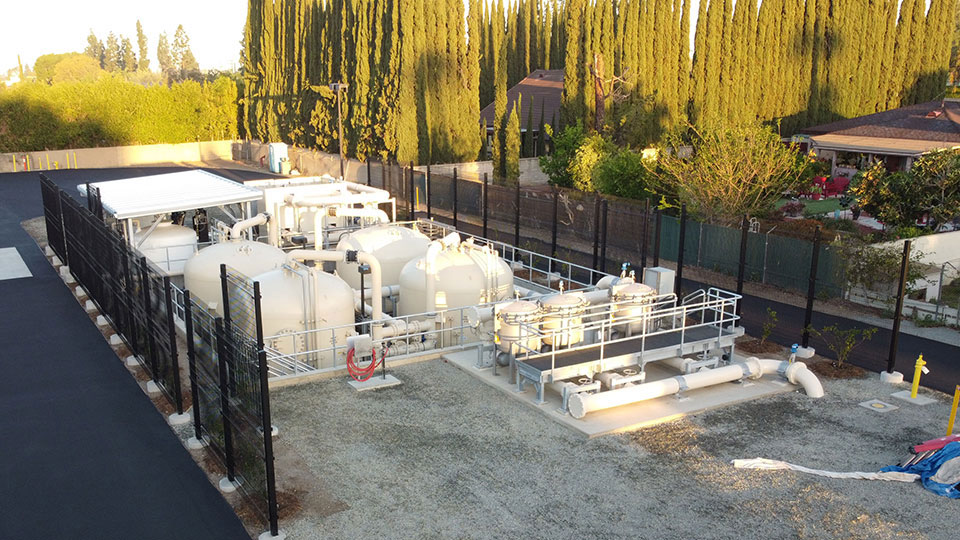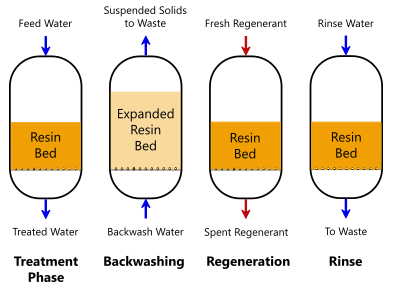Just How PFAS Therapy Makes Sure Tidy and Sustainable Water
The presence of PFAS, typically called "permanently chemicals," poses substantial obstacles to water top quality and public wellness. Advanced therapy innovations, consisting of activated carbon adsorption and membrane layer filtering, have become efficient options to reduce these impurities. By using these approaches, areas can not just attain cleaner water however additionally foster sustainable practices that protect ecological communities. The ramifications of these therapies expand past immediate health and wellness advantages; they increase vital concerns regarding lasting water administration approaches that need to be addressed to make certain a resistant future. What does this mean for our strategy to water sustainability?

Comprehending PFAS Contamination
PFAS, or per- and polyfluoroalkyl materials, have actually become a substantial ecological problem because of their extensive prevalence and perseverance in the environment. These artificial chemicals have actually been used in numerous commercial applications and consumer items, including non-stick pots and pans, waterproof garments, and food product packaging, because of their special buildings such as water and grease resistance.
The contamination of dirt and water sources by PFAS happens mostly with industrial discharges, firefighting foam usage, and leaching from garbage dumps. pfas management. Once released, these substances are immune to degradation, resulting in their accumulation in the environment. This determination raises crucial concerns, as PFAS can take a trip fars away via groundwater and surface water supply, impacting drinking water materials and ecological communities

Wellness Dangers of PFAS
The perseverance of PFAS in the atmosphere raises significant wellness concerns for individuals subjected to these materials. Called "forever chemicals," PFAS do not break down easily and can accumulate in human bodies gradually. Research study has actually linked PFAS direct exposure to different negative health and wellness impacts, consisting of immune system dysfunction, liver damages, and increased danger of specific cancers cells - pfas management. Notably, research studies have actually revealed raised cholesterol levels and prospective influence on reproductive and developing wellness, particularly in pregnant individuals and babies.
The universality of PFAS in consumer items, such as non-stick cooking equipment, water-repellent textiles, and food packaging, additional intensifies the threat of direct exposure. Consuming alcohol water infected with PFAS is a considerable issue, as these chemicals can leach into groundwater sources. Susceptible populaces, including children and those living near commercial websites, might face heightened threats because of their developing systems and possible for higher direct exposure degrees.
As awareness of these health and wellness dangers remains to grow, regulative firms are beginning to develop guidelines for PFAS degrees in drinking water. Public health initiatives are vital to minimize exposure and shield areas from the long-term results of these hazardous compounds.

Ingenious Therapy Technologies
Just how can we properly take on the obstacles presented by PFAS contamination in water sources? Ingenious therapy modern technologies are becoming crucial solutions in the mission for clean water. These methods concentrate on the elimination or damage of per- and polyfluoroalkyl materials (PFAS), which are well-known for their persistence in the setting.
One promising strategy is adsorption using sophisticated materials, such as activated carbon and ion exchange materials. These products have revealed efficacy in recording PFAS particles from water. An additional noteworthy innovation is membrane layer filtering, which utilizes nanofiltration and reverse osmosis to separate impurities at the molecular level, therefore giving a barrier against PFAS.
Furthermore, progressed oxidation processes (AOPs) use strong oxidants to damage down PFAS substances into safe byproducts. This technique is particularly efficient for dealing with very infected water sources. Bioremediation techniques, using specific microbes, are also being explored to degrade PFAS.
As research study continues, crossbreed systems that YOURURL.com incorporate numerous technologies may provide enhanced performance, attending to the complexities of PFAS contamination. The advancement and implementation of these ingenious treatment modern technologies are essential steps towards ensuring the safety and sustainability of our water resources.
Advantages of Efficient PFAS Treatment
Successfully dealing with PFAS contamination in water sources significantly enhances public health and ecological security. PFAS, often referred to as "permanently chemicals," are immune to deterioration and can gather in the body, causing serious wellness dangers such as cancer cells, liver damage, and immune system dysfunction. By executing reliable treatment methods, areas can decrease exposure to these Get More Info hazardous compounds, inevitably boosting the health results of their populaces.
In addition, successful PFAS treatment contributes to the conservation of neighborhood ecosystems. Contaminated water can negatively impact water life and interrupt the delicate balance of regional environments. By ensuring tidy water, therapy processes safeguard biodiversity and maintain ecological honesty.
In addition, efficient PFAS remediation can foster public confidence in water top quality. When areas are assured that their alcohol consumption water is without harmful impurities, it promotes a feeling of security and health. This trust is crucial for neighborhood engagement and assistance for recurring water monitoring efforts.
Future of Water Sustainability
Amid growing issues concerning water top quality and deficiency, the future of water sustainability rests on ingenious techniques and joint efforts. As communities encounter the impending hazards review of impurities like PFAS, the advancement of innovative therapy technologies is vital. These modern technologies not just concentrate on the elimination of unsafe compounds yet also advertise the reuse and recycling of water, consequently lowering general need.
In addition, reliable water governance plays a vital duty in ensuring sustainable practices. Policymakers should incorporate scientific study with regulatory structures to establish clear guidelines for water use and therapy. Stakeholder interaction, including local areas and sectors, promotes a sense of common responsibility and urges sustainable practices across various sectors.
Financial investment in infrastructure is also important; upgrading aging systems to include contemporary filtration and purification approaches can dramatically improve water quality. Accepting green modern technologies, such as natural filtering systems, can provide eco-friendly services.
Inevitably, the future of water sustainability hinges on a holistic technique that combines technology, plan, and area participation. By focusing on these components, we can secure our water resources for generations ahead, ensuring clean and lasting water for all.
Final Thought
In final thought, the reliable therapy of PFAS is necessary for making certain tidy and sustainable water. Ultimately, robust PFAS treatment approaches add to lasting strength in water monitoring, cultivating public trust fund in water high quality and advertising lasting methods.